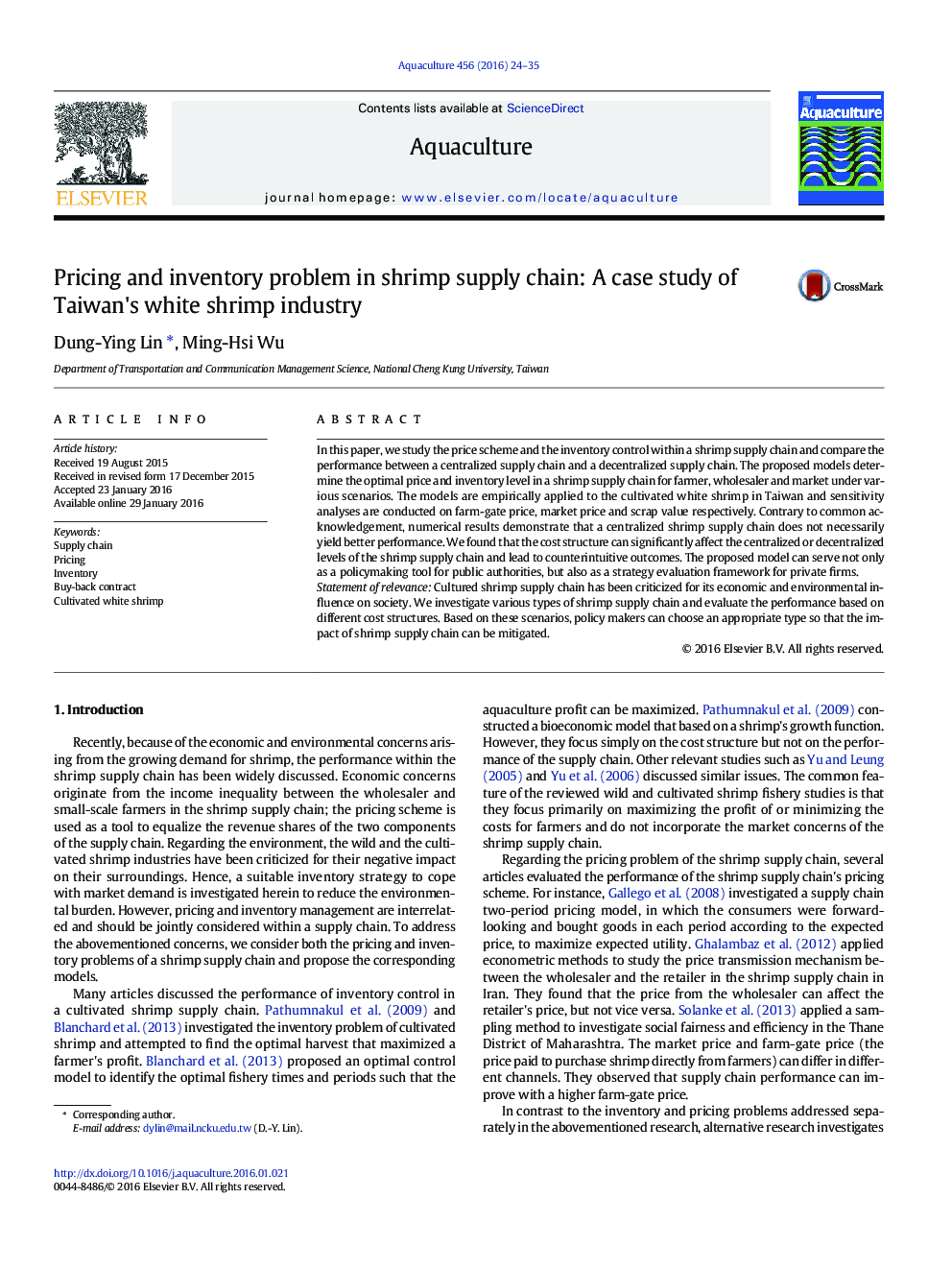| Article ID | Journal | Published Year | Pages | File Type |
|---|---|---|---|---|
| 2421475 | Aquaculture | 2016 | 12 Pages |
•We embed pricing and inventory into a framework to investigate cultivated shrimp supply chain.•We propose a two-echelon decentralized shrimp supply chain and a one-echelon centralized shrimp supply chain models.•Numerical results demonstrate that a centralized shrimp supply chain does not necessarily yield better performance.
In this paper, we study the price scheme and the inventory control within a shrimp supply chain and compare the performance between a centralized supply chain and a decentralized supply chain. The proposed models determine the optimal price and inventory level in a shrimp supply chain for farmer, wholesaler and market under various scenarios. The models are empirically applied to the cultivated white shrimp in Taiwan and sensitivity analyses are conducted on farm-gate price, market price and scrap value respectively. Contrary to common acknowledgement, numerical results demonstrate that a centralized shrimp supply chain does not necessarily yield better performance. We found that the cost structure can significantly affect the centralized or decentralized levels of the shrimp supply chain and lead to counterintuitive outcomes. The proposed model can serve not only as a policymaking tool for public authorities, but also as a strategy evaluation framework for private firms.Statement of relevanceCultured shrimp supply chain has been criticized for its economic and environmental influence on society. We investigate various types of shrimp supply chain and evaluate the performance based on different cost structures. Based on these scenarios, policy makers can choose an appropriate type so that the impact of shrimp supply chain can be mitigated.
